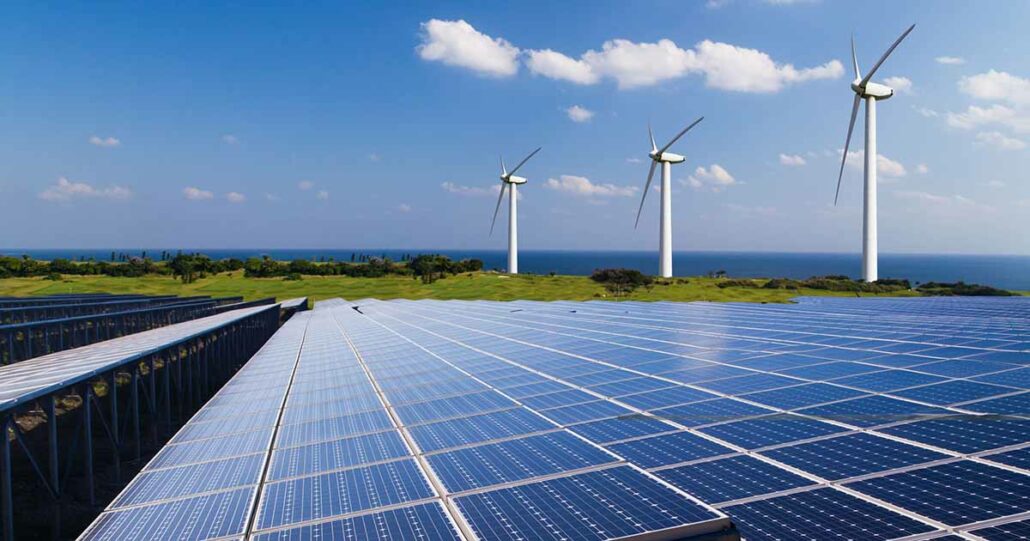Sunshine into Power: How Solar Panels Work
क्या आपने कभी सोचा है कि सोलर पैनल Solar Panel कैसे काम करते हैं? ये पैनल छोटी फैक्ट्रियों (tiny factories) की तरह हैं, जो सूरज की रोशनी को बिजली में बदल देती हैं, जो आपके घर को चला सकती है! आइए अब सौर ऊर्जा की दुनिया को करीब से जानते हैं और देखते हैं कि ये पैनल सूरज की ऊर्जा को कैसे कैद करते हैं।
पैनल का दिल: सोलर सेल The Heart of the Panel: The Solar Cell
एक सोलर पैनल को एक जिग्सॉ पजल की तरह समझें। इसका हर छोटा टुकड़ा एक सोलर सेल होता है, असली बिजली बनाने का कारखाना, जो सूरज की रोशनी को बिजली में बदलता है। ये सेल एक विशेष पदार्थ, अक्सर सिलिकॉन से बने होते हैं, जो एक विशेष प्रकार का चालक होता है।
सूरज की किरणें और इलेक्ट्रॉन: फोटोवोल्टिक प्रभाव Sunbeams and Electrons: The Photovoltaic Effect
जब सूरज की रोशनी किसी सोलर सेल पर पड़ती है, तो वो अपने साथ ऊर्जा के छोटे पैकेट लाती है, जिन्हें फोटॉन photons कहा जाता है। ये फोटॉन सिलिकॉन silicon के परमाणुओं से टकराते हैं, जिससे अंदर हलचल मच जाती है। ये हलचल इलेक्ट्रॉनों (बहुत छोटे, नेगेटिव चार्ज वाले कण) को हिला देती है और उन्हें इधर-उधर घूमने के लिए मजबूर करती है।
लेकिन खास बात ये है कि सोलर सेल को दो परतों से बनाया जाता है – एक परत थोड़ी सी पॉजिटिव और दूसरी थोड़ी सी नेगेटिव। इससे इलेक्ट्रॉनों के बहने के लिए एक अदृश्य “हाईवे” बन जाता है। इसलिए, जब सूरज की रोशनी सेल पर पड़ती है, तो आजाद हुए इलेक्ट्रॉन पॉजिटिव परत की तरफ दौड़ पड़ते हैं, जिससे बिजली का प्रवाह बनता है – बिलकुल तार में करंट की तरह!
डायरेक्ट करंट से इस्तेमाल लायक बिजली में बदलाव From Direct Current to Usable Power
एक सोलर सेल से बनने वाली बिजली कमजोर होती है। इसीलिए, सोलर पैनलों में कई सारी सेल्स को जोड़ा जाता है, ठीक वैसे ही जैसे ज्यादा बिजली बनाने के लिए कोई टीम काम करती है। लेकिन एक पेच है: सोलर सेल डायरेक्ट करंट (DC) बिजली बनाते हैं, जबकि हमारे ज्यादातर उपकरण अल्टरनेटिंग करंट (AC) बिजली पर चलते हैं।
यहाँ सिस्टम का एक और महत्वपूर्ण हिस्सा आता है: इन्वर्टर। यह उपकरण एक अनुवादक की तरह काम करता है, जो सोलर पैनलों से मिलने वाली DC बिजली को AC बिजली में बदल देता है, जिसे आपका घर इस्तेमाल कर सकता है या पावर ग्रिड में वापस भेजा जा सकता है।
जितना तेज धूप, उतनी ज्यादा बिजली Sunnier Days, More Power!
सोलर पैनलों पर जितनी ज्यादा धूप पड़ेगी, उतनी ज्यादा बिजली वो बनाएंगे। तो साफ और धूप वाले दिन सोलर पैनल के लिए सबसे अच्छे होते हैं। लेकिन बादल वाले दिनों में भी कुछ धूप को कैद करके बिजली में बदला जा सकता है।
सूर्य की शक्ति का उपयोग Harnessing the Power of the Sun
सोलर पैनल स्वच्छ, नवीकरणीय ऊर्जा का फायदा उठाने का एक शानदार तरीका है। ये जीवाश्म ईंधन पर निर्भरता कम करने और अधिक टिकाऊ भविष्य बनाने में मदद करते हैं। अब आप समझ गए हैं कि ये सूरज की रोशनी इकट्ठा करने वाले उपकरण कैसे काम करते हैं, तो अगली बार जब आप किसी सोलर पैनल को धूप में देखते हैं तो उसकी सराहना कर सकते हैं!
Sunshine into Power – How Solar Panels Work
Have you ever looked at a house with solar panels on the roof and wondered how they work? Those panels are like tiny factories, turning sunlight into electricity that can power your home! Let’s dive into the not-so-secret world of solar power and see how these panels capture the sun’s energy.
The Heart of the Panel: The Solar Cell
Imagine a solar panel is like a giant jigsaw puzzle. Each tiny piece is a solar cell, the real powerhouse that converts sunlight into electricity. These cells are made from a special material, often silicon, which acts like a conductor with a twist.
Sunbeams and Electrons: The Photovoltaic Effect
When sunlight hits a solar cell, it carries tiny packets of energy called photons. These photons bump into the atoms in the silicon, shaking things up. This shake-up loosens electrons, tiny particles with a negative charge, and makes them want to move around.
But here’s the clever part: the solar cell is built with two layers, one slightly positive and one slightly negative. This creates an invisible “highway” for the electrons to flow. So, when sunlight hits the cell, the freed electrons race towards the positive layer, creating a flow of electricity – just like current in a wire!
From Direct Current to Usable Power
The electricity generated by a single solar cell is weak. That’s why solar panels have many cells connected together, like a team working to produce more power. But there’s a catch: solar cells produce direct current (DC) electricity, while most of our appliances use alternating current (AC).
Here comes another important part of the system: the inverter. This device acts like a translator, converting the DC electricity from the solar panels into AC electricity that can be used by your home or fed back into the power grid.
Sunnier Days, More Power!
The more sunlight hitting the solar panels, the more electricity they produce. So, clear and sunny days are a solar panel’s best friend. But even on cloudy days, some sunlight can still be captured and converted into electricity.
Harnessing the Power of the Sun
Solar panels are a brilliant way to tap into clean, renewable energy. They help reduce reliance on fossil fuels and create a more sustainable future. By understanding how these sunshine collectors work, you can appreciate the next time you see a solar panel basking in the sun!
